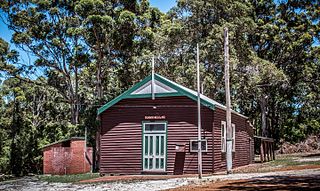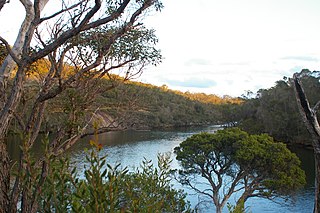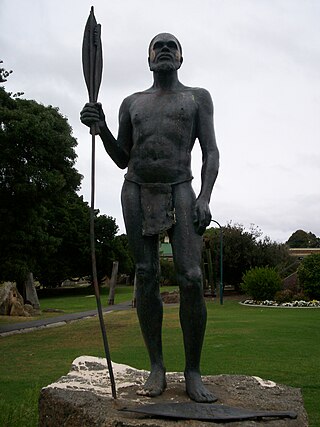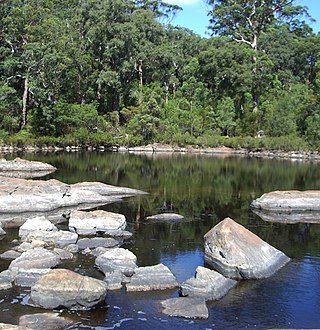
The Moruya River is an open and trained mature wave dominated barrier estuary or tidal river is located in the South Coast region of New South Wales, Australia. In its upper freshwater reaches, the river is known as the Deua River.

Torbay is a small town and a bay in the Great Southern region of Western Australia, 20 kilometres (12 mi) west of Albany. Torbay is within the City of Albany local government area. The Torbay townsite was gazetted in 1910.

Mount Barker is a town and locality on Albany Highway and the administrative centre of the Shire of Plantagenet in the Great Southern region of Western Australia. At the 2021 census, Mount Barker had a population of 2,855.

King George Sound is a sound on the south coast of Western Australia. Named King George the Third's Sound in 1791, it was referred to as King George's Sound from 1805. The name "King George Sound" gradually came into use from about 1934, prompted by new Admiralty charts supporting the intention to eliminate the possessive 's' from geographical names.

Denmark is a coastal town located on Wilson Inlet in the Great Southern region of Western Australia, 423 kilometres (263 mi) south-south-east of the state capital of Perth. At the 2016 census, Denmark had a population of 2,558; however, the population can be several times the base population during tourist seasons.

Thomas Braidwood Wilson FRGS was an Australian surgeon and explorer. He was baptised in Kirknewton, West Lothian, Scotland, the son of James, and Catherine Boak.

The Murray River is a river in the southwest of Western Australia. It played a significant part in the expansion of settlement in the area south of Perth after the arrival of British settlers at the Swan River Colony in 1829. It should not be confused with the Murray River in southeastern Australia, which is the longest river in the country.
Ocean Beach is a tourist attraction located about 5 kilometres (3 mi) South of the town of Denmark in Western Australia.

The Kalgan River is a river in the Great Southern region of Western Australia.

The King River is a river in the Great Southern region of Western Australia.

Mokare was a Noongar Aboriginal man from the south-west corner of Australia, who was pivotal in aiding European exploration of the area.

The Frankland River is a river in the Great Southern region of Western Australia. The Frankland River is the largest river by volume in the region and the eighth largest in the state. The traditional owners of the area are the Menang Noongar people, who know the river as Kwakoorillup, meaning "place of quokka".

The Fitzgerald River is a river in the Great Southern region of Western Australia.

The Denmark River is located in the Great Southern region of Western Australia. The river rises near Pardelup and meanders in a southerly direction until it flows through Denmark into Wilson Inlet. The traditional owners of the area are the Noongar people, who know the river as Kwoorabup, meaning the place of the western brush wallaby.

Gairdner River is a river located in the Great Southern region of Western Australia.
Pallinup River is a river located in the Great Southern region of Western Australia. It was previously known as Salt River.
The Young River is a river on the south coast of Western Australia that rises south of the Frank Hann National Park then flows in a south easterly direction for a distance of 95 kilometres (59 mi) before flowing into Stokes Inlet, which discharges into the Southern Ocean.

Wilson Inlet is a shallow, seasonally open estuary located on the coast of the Great Southern region of Western Australia.
The Kent River is a river in the Great Southern of Western Australia.
The Tarwin River is a perennial river of the West Gippsland catchment, located in the South Gippsland region of the Australian state of Victoria. The Tarwin River is the primary river system within South Gippsland Shire and has a catchment area of approximately 1,500 square kilometres (580 sq mi), predominantly rural with small pockets of residential land use. It flows south from the Strzlecki Ranges and discharges in the eastern reaches of Anderson Inlet, a shallow estuary connected to Bass Strait.
















